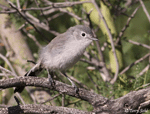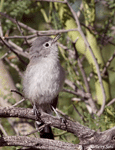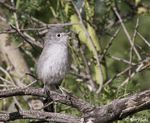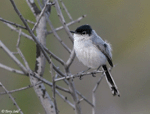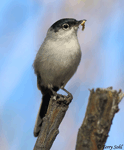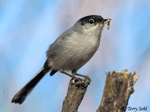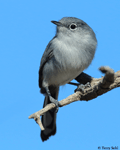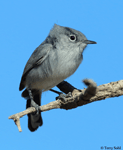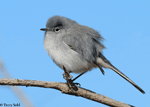Black-tailed Gnatcatcher
Polioptila melanura
| Length: 4.5 inches | Wingspan: 5.5 inches | Seasonality: Non-resident in South Dakota |
| ID Keys: Tiny size, gray overall, black cap on breeding male, white eye-ring, black undertail with white bars on the end | ||
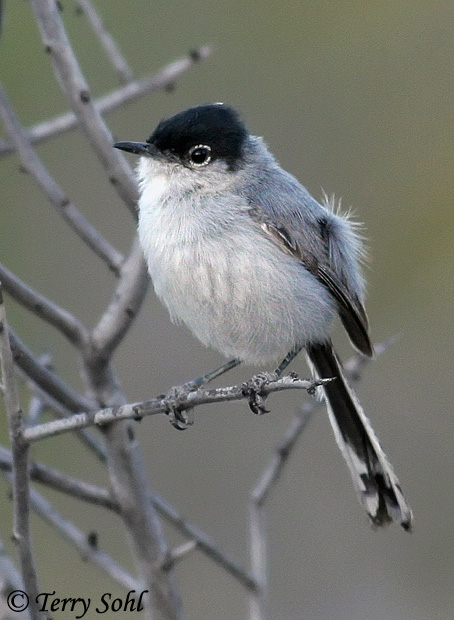 The
Black-tailed Gnatcatcher is a very small but tough bird, eeking out a living
in the arid habitats of the American Southwest. They are very active
as the flit through the foliage of their shrubby habitats, searching for the
insects and spiders that comprise their diet. Paired males and females
stay together at all times during the year, and even typically forage close
to each other outside of the breeding season.
The
Black-tailed Gnatcatcher is a very small but tough bird, eeking out a living
in the arid habitats of the American Southwest. They are very active
as the flit through the foliage of their shrubby habitats, searching for the
insects and spiders that comprise their diet. Paired males and females
stay together at all times during the year, and even typically forage close
to each other outside of the breeding season.
Habitat: Found in arid, brushy habitats of the southwestern U.S., such as Sonoran desert habitats, as well as other dry shrubby habitats.
Diet: Feeds on insects and spiders. They may feed on berries at times.
Behavior: Very active when foraging, moving quickly through shrubs and low in trees, looking for insects. They will sometimes hover-glean, capturing insects from the surface of vegetation while hovering.
Nesting: The nest of a Black-tailed Gnatcatcher is a small cup built of grasses, weeds, strips of bark, and spider webs, often lined with softer material such as feathers or hair. The female lays 3 to 5 eggs, and both parents help to incubate them. Upon hatching, both parents help to feed the young, who leave the nest after about 2 weeks.
Interactive eBird Map: Click to access an interactive eBird map of Black-tailed Gnatcatcher sightings
Song: Has a large variety of calls, most a series of harsh notes.
Migration: Considered a permanent resident throughout their range.
Similar Species: California Gnatcatcher, Blue-gray Gnatcatcher, Black-capped Gnatcatcher
Conservation Status: Populations may be in decline, but they are still found over a wide geographic range and are common in some areas. The IUCN lists the Black-tailed Gnatcatcher as a species of "Least Concern".
Further Information: 1) Arizona Sonoran Desert Museum - Black-tailed Gnatcatcher
2) Audubon Guide - Black-tailed Gnatcatcher
3) USGS Bird InfoCenter - Black-tailed Gnatcatcher
Photo Information: Photo taken on May 4th, 2008 on the outskirts of Tucson, Arizona - By Terry Sohl
| Click below for a higher-resolution map |
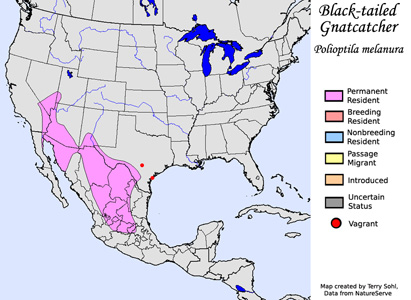 |
| South Dakota Status: Non-resident in South Dakota |
Additional Black-tailed Gnatcatcher Photos
Click for a higher-resolution version of these photos
